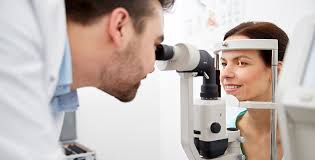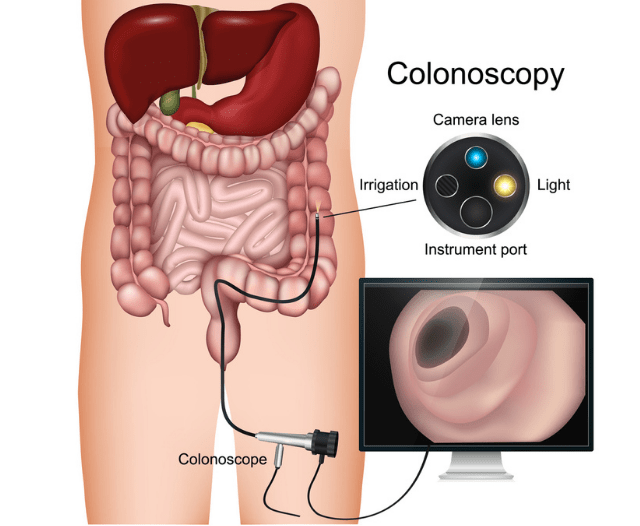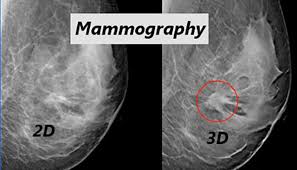
Eating a healthy diet, getting more sleep, exercising every day, & scheduling regular appointments with your doctor is the key to living a healthy life. Life is beautiful, and the last thing you want to do is bog yourself down with unnecessary health problems. While your vital organs work well today and you might feel energetic, you never know what tomorrow could bring. So, don’t take your health for granted and abide by the following blueprint to live a long life.

1. Make an Appointment with Your Primary Healthcare Provider
The blueprint to living a long life starts with scheduling an appointment with a general physician. Some diseases don’t show up as symptoms until it’s too late. Therefore, getting regular check-ups will help in diagnosing health issues and finding problems even before they start. Typically, the medical specialist will conduct a physical examination and ask you to get a urine test and regular blood tests to check blood sugar, minerals, and vitamins.

2. Request a Blood Test
Getting regular blood tests once a year is essential to keep track of your well-being and to live a healthy lifestyle. It also helps you visualize changes in your body, investigate early signs of illness, and empower you to make wise decisions about your health. Here is a list of the ten essential blood tests that you should get done regularly:
● Complete Blood Count (CBC)
● Lipid Panel (Triglycerides and Cholesterol)
● Comprehensive Metabolic Panel (CMP)
● Hs-CRP
● HbA1c
● Ferritin/Iron
● Vitamin D (25-Hydroxy Vitamin D)
● GGT
● Thyroid Hormones (TSH)
● Uric Acid
3. Check Your Blood Pressure Regularly
Did you know that high blood pressure and hypertension are known as the “silent killer”? Primarily because most people with hypertension aren’t aware of the medical problem as it doesn’t have any symptoms. However, if left untreated, high blood pressure can result in causing heart and brain-related issues. Therefore, step number three in the blueprint to living a long life is to get your blood pressure checked every day, twice if you have hypertension. Furthermore, consult with your healthcare specialist, as they will prescribe the right medicine to control high blood pressure.
4. Get Your Cholesterol Checked
High cholesterol has no symptoms or signs! Also known as the “Lipid Profile” or “Lipid Panel,” having a complete cholesterol test every 1 to 4 years, depending upon your age, is essential for living a healthy lifestyle. A cholesterol test can help determine the risk of buildup of fatty deposits in your arteries which can lead to blockage in the heart or veins. A complete cholesterol test includes:
● Total Cholesterol – Less than 200 mg/dL
● LDL (Low-Density Lipoprotein Cholesterol) – Less than 100 mg/dL
● HDL (High-Density Lipoprotein Cholesterol – Greater than or equal to 60 mg/dL
● Triglycerides – Less than 150 mg/dL
5. Don’t Skip the PET Scan
A position emission tomography (PET) scan is a radiation-based test that can help doctors see inside your body, helping in revealing the metabolic and biochemical function of your organs and tissues. A PET scan is an effective way to identify underlying medical conditions at an early stage, such as brain disorders, heart disease, and cancer. In addition to this, you should also get a complete cancer screening, colonoscopy, endoscopy, breast exam, mammogram, prostate exam, and Pap smear once a year.

6. Eat Healthy
Consuming a wide variety of plant foods like vegetables, fruits, whole grains, seeds, beans, and nuts, promotes longevity, decreases the risk of diseases, and helps in maintaining weight. According to healthcare professionals, to live a healthy lifestyle, adults should eat at least five portions of vegetables and fruits every day. Eating healthy will reduce the risk of noncommunicable diseases (NCDs) such as cancer, stroke, heart disease, and diabetes.

7. Quit Smoking
According to research, people who smoke lose up to ten years of their life and are three times more likely to die prematurely than non-smokers. Smoking can increase the risk of kidney cancer, lung cancer, heart attack, esophageal cancer, and much more. So, if you are a smoker, there’s no better time to quit smoking today. If you don’t want to do it for yourself, do it for those you love.
On the other hand, if you are proud of the fact that you don’t smoke but are second-hand smoking, then know that the long-term risk of passive smoking is somewhat similar to smoking directly. So, make sure to keep a distance from smokers.

8. Practice Safe Sex
Just like your physical health, looking after your sexual health plays an instrumental role in the blueprint to living a long life. Practice safe sex to prevent sexually transmitted infections like syphilis and gonorrhea, and even HIV. You can simply do this by using preventive measures like PrEP (Pre-exposure Prophylaxis) condoms when performing any sexual activities this will protect you from STIs and HIV.
9. Keep Your Blood Glucose Under Control - Consume Less Sugar and Salt
Consuming an excessive amount of salt in your food can put you at risk of high blood pressure, increasing the risk of stroke and heart disease. Because most people consume sodium through salt, it is recommended to reduce your salt intake to 5g per day, which is equal to one tablespoon.
On the flip side, consuming an excessive amount of sugar increases the risk of weight gain and tooth decay. Therefore, it is advised to limit the sugar intake in your body by limiting the consumption of sugar-sweetened beverages, candies, and sugary snacks.

10. Exercise Regularly and Practice Mindfulness
Regular physical activity is one of the most important parts of the blueprint to living a long life. Being physically active not only helps in managing weight and strengthening bones and muscles, but it also reduces the risk of diseases and keeps you energized and active throughout the day. Adults aged 18 – 64 years should participate in any form of physical activity for 150 minutes weekly.
To minimize the level of stress and anxiety, you should also ensure to meditate once every day. Doing so promotes happiness, sharpens thinking, and enhances self-awareness.

11. Don’t Forget the Dental Exam
Did you know that if left untreated, a tooth infection can increase your risk of heart disease by three times? The inflammation of your tooth can cause the spread to the blood vessels in your heart, leading to a stroke. Therefore, to live a healthy lifestyle, it is vital to practice good dental hygiene. You can simply do this by brushing your teeth twice daily, rinsing your mouth and flossing after every meal, and scheduling a dental exam every six months.

12. Get Your Eyes Examined
The next step in the blueprint to living a long life is to get your eyes examined every two to four years. During an eye exam, the optometrist will measure the diameter of the blood vessels to determine the signs of high blood pressure. Moreover, an eye exam also helps improve your vision and detect any eye-related issues like age-related macular degeneration, glaucoma, and cataracts.
13. Colorectal Cancer Screening

Colorectal Cancer screening test is used to look for a disease when a person doesn’t have symptoms. (When a person has symptoms, diagnostic tests are used to find out the cause of the symptoms.)
Colorectal cancer almost always develops from precancerous polyps (abnormal growths) in the colon or rectum. Screening tests can find precancerous polyps, so that they can be removed before they turn into cancer. Screening tests can also find colorectal cancer early, when treatment works best.
Screening Recommendations
Regular screening, beginning at age 45, is the key to preventing colorectal cancer and finding it early. It is recommended that adults age 45 to 75 be screened for colorectal cancer. It is recommended that adults age 76 to 85 talk to their doctor about screening. There are several colorectal cancer screening strategies, including stool tests, flexible sigmoidoscopy, colonoscopy, and CT colonography (virtual colonoscopy).
Stool Tests
The guaiac-based fecal occult blood test (gFOBT) uses the chemical guaiac to detect blood in the stool. It is done once a year. For this test, you receive a test kit from your healthcare provider. At home, you use a stick or brush to obtain a small amount of stool. You return the test kit to the doctor or a lab, where the stool samples are checked for the presence of blood.
The fecal immunochemical test (FIT) uses antibodies to detect blood in the stool. It is also done once a year in the same way as a gFOBT.
The FIT-DNA test (also referred to as the stool DNA test) combines the FIT with a test that detects altered DNA in the stool. For this test, you collect an entire bowel movement and send it to a lab, where it is checked for altered DNA and for the presence of blood. It is done once every three years.
Flexible Sigmoidoscopy
For this test, the doctor puts a short, thin, flexible, lighted tube into your rectum. The doctor checks for polyps or cancer inside the rectum and lower third of the colon. How often: Every 5 years, or every 10 years with a FIT every year.
Colonoscopy

This is similar to flexible sigmoidoscopy, except the doctor uses a longer, thin, flexible, lighted tube to check for polyps or cancer inside the rectum and the entire colon. During the test, the doctor can find and remove most polyps and some cancers. Colonoscopy also is used as a follow-up test if anything unusual is found during one of the other screening tests.
How often: Every 10 years (for people who do not have an increased risk of colorectal cancer).
CT Colonography (Virtual Colonoscopy)
Computed tomography (CT) colonography, also called a virtual colonoscopy, uses X-rays and computers to produce images of the entire colon, which are displayed on a computer screen for the doctor to analyze.
How often: Every 5 years.
How Do I Know Which Screening Test Is Right for Me?
Each test has advantages and disadvantages. Talk to your doctor about the pros and cons of each test, and how often to be tested. Which test to use depends on: Your preferences.
Your medical condition.
Your personal or family history of colorectal cancer or colorectal polyps.
If you have a genetic syndrome such as familial adenomatous polyposis (FAP)external icon or hereditary non-polyposis colorectal cancer (Lynch syndrome). The likelihood that you will get the test. The resources available for testing and follow-up.
14. Breast Cancer Screening

Breast cancer screening means checking a woman’s breasts for cancer before there are signs or symptoms of the disease. All women need to be informed by their health care provider about the best screening options for them. When you are told about the benefits and risks of screening and decide with your health care provider whether screening is right for you—and if so, when to have it—this is called informed and shared decision-making. Although breast cancer screening cannot prevent breast cancer, it can help find breast cancer early, when it is easier to treat. Talk to your doctor about which breast cancer screening tests are right for you, and when you should have them.
Mammogram
A mammogram is an X-ray of the breast. For many women, mammograms are the best way to find breast cancer early, when it is easier to treat and before it is big enough to feel or cause symptoms. Having regular mammograms can lower the risk of dying from breast cancer. At this time, a mammogram is the best way to find breast cancer for most women of screening age.
Breast Magnetic Resonance Imaging (MRI)
A breast MRI uses magnets and radio waves to take pictures of the breast. Breast MRI is used along with mammograms to screen women who are at high risk for getting breast cancer. Because breast MRIs may appear abnormal even when there is no cancer, they are not used for women at average risk.
Clinical Breast Exam

A clinical breast exam is an examination by a doctor or nurse, who uses his or her hands to feel for lumps or other changes.
Breast Self-Awareness

Being familiar with how your breasts look and feel can help you notice symptoms such as lumps, pain, or changes in size that may be of concern. These could include changes found during a breast self-exam. You should report any changes that you notice to your doctor or health care provider.

Having a clinical breast exam or doing a breast self-exam has not been found to lower the risk of dying from breast cancer.

Benefits and Risks of Screening
Every screening test has benefits and risks, which is why it’s important to talk to your doctor before getting any screening test, like a mammogram.

Benefit of Screening

The benefit of screening is finding cancer early, when it’s easier to treat.
Wrapping It Up!
Congratulations, you now know what the blueprint to living a long life is! While immortality is definitely out of everyone’s control, adapting the aforementioned healthy lifestyle changes will help you lead a long, happy, active life.
